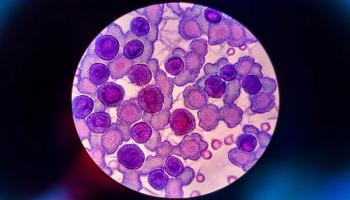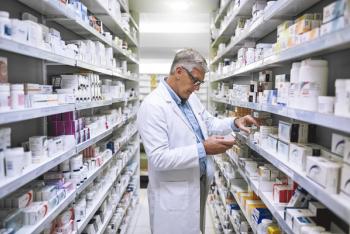
- Pharmacy Careers May 2014 0
Benjamin Franklin: A Founding Father of Pharmacy
In addition to his well-known contributions to society, Benjamin Franklin helped to establish the first public hospital and the first hospital pharmacy.
In addition to his well-known contributions to society, Benjamin Franklin helped to establish the first public hospital and the first hospital pharmacy.
Scientist, printer, inventor: Founding Father Benjamin Franklin’s influence spans almost every area—including pharmacy and public health. In addition to his well-known inventions and experiments, Benjamin Franklin was instrumental in creating the United States’ first public hospital—and the first hospital pharmacy, although it was then called the hospital apothecary. Philadelphia Hospital was among Franklin’s civic contributions, and it was made possible because of his influence and business acumen.
The ships filling Philadelphia’s ports between 1730 and 1776 brought more than trade items: the influx of people made Philadelphia the fastest growing city in the 13 colonies. That flood of people led to an increase in the city’s older, mentally ill, or otherwise sick population.
The idea for a public hospital can be attributed to Franklin’s long-time friend, physician Thomas Bond, and his time spent in the well-known Parisian hospital, Hotel-Dieu. A novel idea for the colonies, Dr. Bond’s attempts to garner public support for a hospital in Philadelphia were met with uniform response: What was Benjamin Franklin’s opinion of the idea?
According to the hospital’s website, Dr. Bond believed Franklin would not be interested in the idea, which was why Franklin was not approached initially. Ultimately, Franklin’s support was enough to turn public opinion, and he organized a citizen’s petition arguing in favor of creating the hospital to present to the Pennsylvania Assembly.
The Assembly introduced a bill to create the hospital within 3 weeks of receiving the petition—but Franklin would once again step in to save the idea from detractors. Rural assembly members were not sold on the hospital, believing it would only serve city residents. Franklin countered by offering, and then raising more than 200 pounds through private donations, which the Assembly would match.
The hospital received its charter in 1751, and after temporarily being housed in a deceased Assembly member’s house, opened its first building in 1755. It admitted its first patient in 1753, despite the lack of a formal location.
Now known as Pennsylvania Hospital, the hospital continues to serve patients in the Philadelphia area. According to the Independence Hall Association’s website, the first buildings still stand, and are open for guided and self-guided tours. The Great Court, which housed the hospital apothecary, library, and administrative offices, continues to house the hospital’s administrative offices.
Sidebar: Ahead of His Time: Benjamin Franklin’s Contributions to Health
Benjamin Franklin’s inquisitive spirit left few areas untouched, including general health and wellness.
Franklin’s spirit sometimes flew against those of his family, however. His brother, who published Boston’s first original newspaper and employed young Benjamin Franklin as an apprentice, opposed smallpox vaccination, believing it made patients sicker, the Independence Hall Association states. Franklin, however, saw the value in inoculation, particularly after losing his young son to the disease years after his apprenticeship. He co-authored a pamphlet favoring variolation—transferring matter from a smallpox sore into healthy person’s cut or scratch, according to the College of Physicians of Philadelphia’s History of Vaccines Blog.
As a printer, Franklin experienced stiffness and soreness in his hands when using a typesetting method involving warm lead, according to a website from Twin Cities Public Television, Inc. The same method would cause some typesetters to lose use of their hands, prompting Franklin to switch to a method that did not involve warm lead. During a visit to a French hospital years later, Franklin determined that most patients with similar symptoms—the “dry gripes” or “dry belly ache”—worked with lead, often in large quantities. His observations are believed to be one of the earliest links between lead exposure and health problems.
The 18th-century superstition blamed wet clothes and damp weather for the spread of the common cold, according to the same website. Growing up in a port city and moving to another, Franklin saw that sailors in those cities tended to avoid the common cold, despite spending most of their days in wet clothing and around damp air. He pondered that observation for several years before concluding, “People often catch cold from one another when shut up together in small close rooms, coaches, &C., and when sitting near and conversing so as to breathe in each other’s transpiration.”
Already known as an inventor, Franklin created the flexible urinary catheter, a departure from the rigid, and painful devices existing at the time, to ease his brother, John’s, kidney stone-related discomfort.
Sidebar: Pharmacy Parallels: Past and Present
Although colonial pharmacists—also called apothecaries or druggists—practiced in radically different situations than most modern pharmacists, they faced problems similar to those seen in modern practice.
Residencies
Serving as a pharmacy resident in exchange for room and board was similar to an 18th-century scholarship, although the residents themselves might not be pharmacists. According to an article detailing the history of Philadelphia Hospital, the students working in the apothecary could be studying medicine or surgery rather than pharmacy specifically. At the time, medicine and pharmacy were so closely intertwined that pharmacists could evaluate, diagnose, prescribe, and prepare remedies for most common ailments, just like physicians.
Compounding
During the colonial era, all medications were compounded from their raw materials, whether those materials were gathered from the local area or imported from Europe. Although apothecaries in urban areas might serve as the area’s retail pharmacy, patients in areas that were not heavily populated might receive compounded medications from a physician or physician’s apprentice.
Counseling
Like today, colonial pharmacists served a multifaceted role that hinged on counseling patients. The lack of separation between the pharmacist’s realm and the physician’s practice meant pharmacists could make house calls, according to the website for Colonial Williamsburg. Their role as the all-service health care provider in certain situations also meant pharmacists might perform surgery or act as midwives during childbirth. Similar to today, colonial health care was often expensive, so patients often received folk remedies and folk medicine at home first.
Drug Shortages
At Philadelphia Hospital, drugs for the nation’s first hospital pharmacy were purchased from England, although certain remedies may have involved local plants or other components. With the start of the American Revolution, shipping with England—including the channels used to obtain drugs—shut down. As a result, the hospital apothecaries likely coped with drug shortages while hunting for alternative remedies or new suppliers.
Articles in this issue
over 11 years ago
Great Expectations: Preparing for Your First Job in Pharmacyover 11 years ago
Job Facts & Figures: Information for Successover 11 years ago
USPHS: Caring for the Nationover 11 years ago
Passing the First Test: How to Impress on the Residency Interviewover 11 years ago
Dress for Success: If the Shoe Fitsover 11 years ago
Not-to-Miss Highlights from Pharmacy Timesover 11 years ago
Test Your Skills: Drink to Your Healthover 11 years ago
Gadget Guideover 11 years ago
Student Career ResourcesNewsletter
Stay informed on drug updates, treatment guidelines, and pharmacy practice trends—subscribe to Pharmacy Times for weekly clinical insights.

















































































































































































































